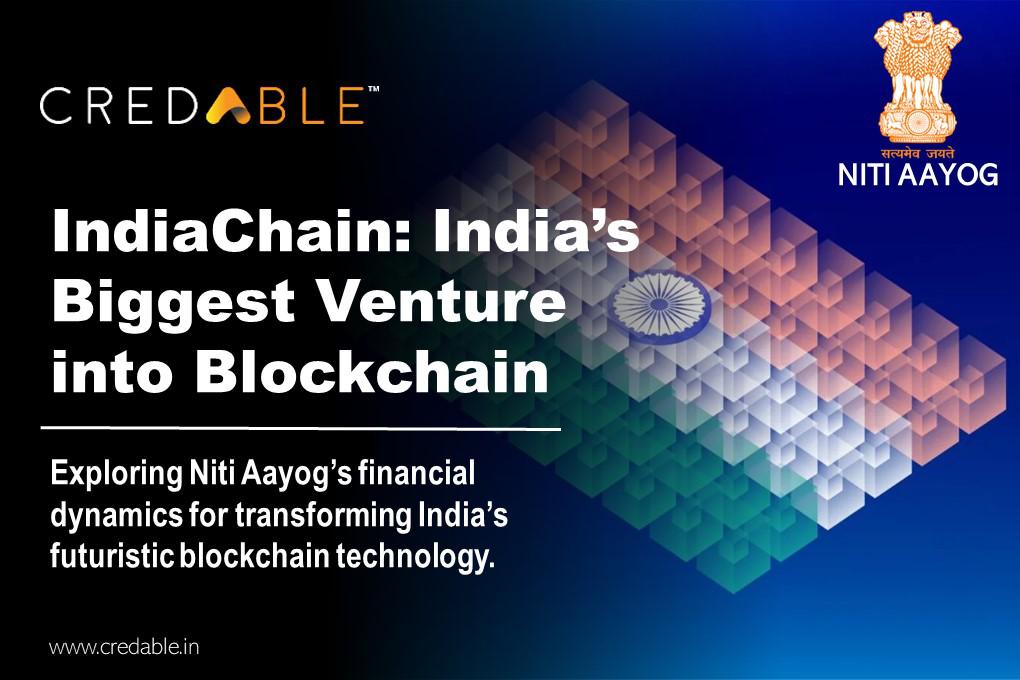IndiaChain: India’s Biggest Venture into Blockchain
The Indian government intends to create IndiaChain, a massive blockchain initiative. In November of 2017, the country’s think tank, NITI Aayog, launched a blockchain system for India’s public data. The NITI Aayog has also revealed that they are in the process of developing the national data analytics portal, and on top of it, they are building up a knowledge base that can be used by different governmental entities in the future.
NITI Aayog is also directly involved in the on-ground policy interventions through different programs and schemes. NITI Aayog’s work on policy has been critical to the navigation of and the mapping of the course of the country in matters of national and international significance in economics, dissemination of best practices within and outside the country, injection of fresh policy ideas, and specific issue-based advocacy.
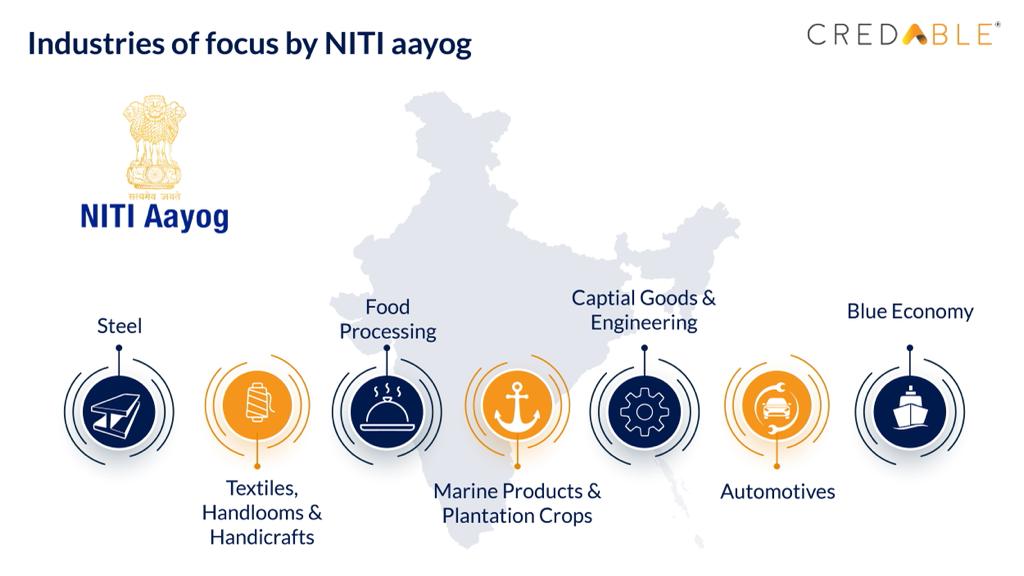
NITI Aayog (The National Institution for Transforming India), serves as the Government of India’s flagship think-tank for public policy, a Nodal Agency charged with catalyzing economic development and fostering cooperative federalism by engaging state governments across India in economic policymaking using a bottom-up approach. The NITI aayog was established in 2015, by the NDA government, as an alternative to the Planning Commission, which followed the top-down model. Finance minister Arun Jaitley made the following remarks about the need for setting up NITI, “The 65-year-old Planning Commission had become a redundant organization. It was relevant in a command economy structure, but not any longer. India is a diversified country and its states are in various phases of economic development along with their own strengths and weaknesses. In this context, a ‘one size fits all’ approach to economic planning is obsolete. It cannot make India competitive in today’s global economy.”
IndiaChain: Most Ambitious Project By Niti Aayog
The Indian government is in the process of finalizing regulations on blockchain use in the country. NITI Aayog is working to establish IndiaChain, the largest blockchain network in the country, aiming to cut down fraud, accelerate contract execution, improve transaction transparency, and promote the agriculture economy in the country. IndiaChain would be an open, Indian-specific blockchain infrastructure for the government, and would take advantage of Jan-Dhan-Yojana, Aadhaar, and the Mobile Trinity, also allow blockchain developers to create social applications.
Once it is ready, the Indian government will be hoping IndiaChain will get the kind of uptake UPI has received thus far.
A Blockchain is a decentralized, distributed system of record-keeping maintained on a network of computers called nodes.
Once IndiaChain is fully operational, the country could become the first among major economies to create a national network of blockchains for the purpose of powering the government. When it is up and running, India will probably be the largest-scale adoption of blockchain for governance in the world.
According to a second source, the heavy lifting has already been done with a national rollout of Aadhaar, India’s unique ID project. IndiaStack, the set of codes developed around India’s unique identity project Aadhaar, helps developers create products and services that run on the country’s digital infrastructure.
NITI Aayog has conducted two international-scale hackathons on AI and organized a nationwide case-study competition on the use of AI in agri-tech. During a Blockchain Summit and Hackathon, NITI Aayog (Government of India), Proffer, and partners such as Microsoft, AWS, Accel Partners, and IBM collaboratively imagined what the new digital infrastructure of India might look like and where blockchain can contribute. The other focus of the Blockchain summit and hackathon was exploring the use cases of concepts such as IndiaChain — the Blockchain Infrastructure for a Digital India, built upon existing initiatives such as Aadhar, the world’s largest biometric ID project, which has 12-digit unique IDs for 1.2 billion Indian residents.
General Insurance companies are also working on pilots for tracking medical insurance policies using the NITI Aayog is conducting PoCs across segments like land records, drugs, and certificates, with partnerships with established tech companies as well as startups. Apart from those mentioned above, the role of NITI Aayog, through its officers, advisors, and role of policy formulation, has been dominant in the design of the Ayushman Bharat, which is the largest health insurance program in the world. NITI Aayog has been broadly studying India’s private-sector healthcare delivery landscape.
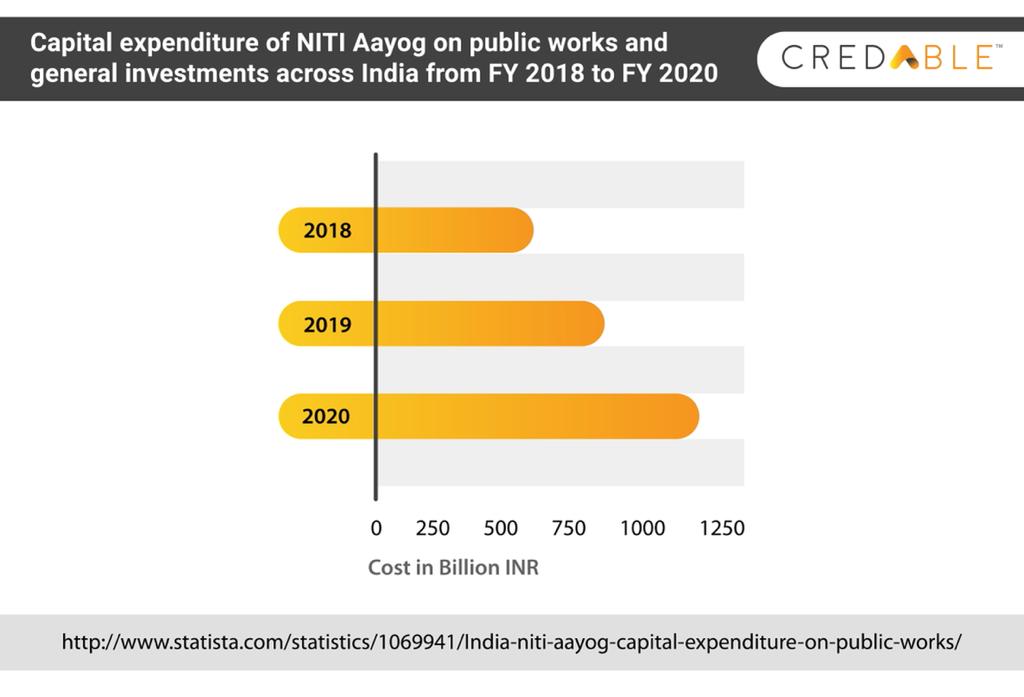
The Indian government would also tie the IndiaChain project to IndiaStack, its exclusive identity database for Aadhaar database. Since the government is able to roll out the bulk of projects that are blockchain-related, unlike with AI, where it is acting only as an enabler, the government needs to identify where blockchain will work and where blockchain will not. India has seen a handful of Proof of Concepts (PoCs) demonstrating the applications of blockchain for banking, insurance, and managing land records. Companies will not need to rebuild architecture, but could utilize underlying technologies, said the official. For example, companies could use Aadhaar for Authenticating user transactions before building distributed applications.
Impacts on the MSME
The Niti Aayog Blockchain has the potential to revolutionize the supply chain function for MSMEs. The immutable and transparent nature of blockchain technology can help streamline processes, reduce costs and improve transparency. For example, blockchain can be used to track the movement of goods throughout the supply chain, from raw materials to finished products. This would allow all stakeholders to have real-time visibility into where goods are at any given time and could help to resolve disputes quickly and efficiently. In addition, blockchain could also be used to create digital contracts between suppliers and buyers. These contracts could automatically execute when certain conditions are met, such as delivery of goods or receipt of payment. This would further reduce the need for manual intervention and paperwork, saving time and money.
The India Chain initiative has the potential to greatly impact the MSME lending ecosystem. By digitizing MSME lending and making it more transparent, India Chain could help reduce corruption and increase access to financing for MSMEs. Additionally, by making MSME lending data more readily available, India Chain could help lenders better assess risks and make more informed lending decisions. Ultimately, the goal of India Chain is to make MSME lending more efficient and effective, benefiting both lenders and borrowers.
If India goes ahead with its plan to launch a national blockchain, it would directly or indirectly benefit the fintechs who are into lending. The Indian government is considering using blockchain to create a digital infrastructure that would be secure, efficient and tamper-proof. This would reduce the cost of many financial transactions and make it easier for fintechs to lend money. In addition, the move could help boost investor confidence in the country’s fintech sector.
Stakeholders involved in the IndiaChain and how it is funded?
There are a variety of stakeholders involved in the IndiaChain initiative, which is a project to create a blockchain-based infrastructure for the country. The Indian government is one of the key stakeholders, as the project is being funded by the government. Other stakeholders include private companies, academic institutions, and non-profit organizations. The private companies are helping in the development of the technology required for the project. The academia is providing input on the social and economic impact of the project. International organizations are providing technical assistance and advice
The goal of the India Chain project is to create a secure and efficient infrastructure that can be used by businesses and individuals alike. The project is still in its early stages, but the hope is that it will eventually help to streamline processes and reduce costs. In addition, by using blockchain technology, IndiaChain could help to increase transparency and reduce corruption. The project is being implemented by the National Informatics Centre (NIC). The NIC is working with various stakeholders in order to ensure the success of the India Chain project.
Among recent developments, IndiaChain, based on the Aadhaar project, will be linked to IndiaStack and other government digital identification databases. The government is in the process of developing regulations for the use of blockchain technology in India that can help with e-signatures from individuals. NITI Aayog and Gujarat University have signed an agreement to cooperate in the agricultural sector.
Working capital for building a blockchain
To understand how much, it costs to build blockchain projects, we need to take a look at the core steps involved in the process, as well as what each one of these would roughly cost you. Most importantly, you need to find out what the costs are for building a Blockchain Project.
Cost estimates are a crucial part of any project, more so if you are building your project on the Blockchain. To come up with the precise cost estimate of your blockchain application, you need to consider a variety of factors.
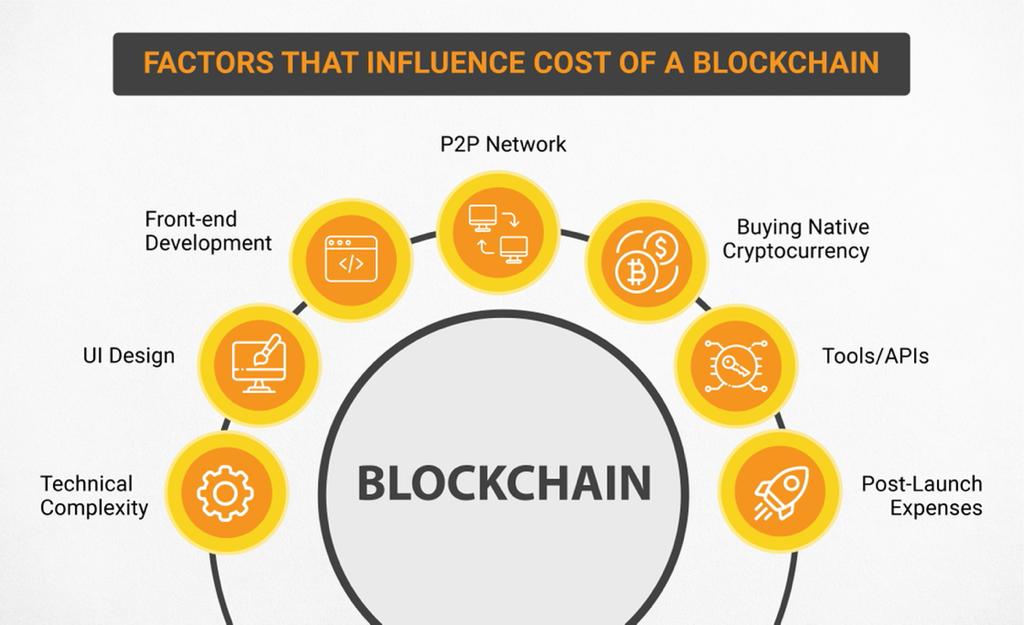
Numerous factors directly affect a blockchain applications strategy, and consequently, its total development costs. Let us dive deeper into it and highlight various parameters that may contribute to your blockchain app development costs.
Just like the costs for developing mobile apps, the costs to build a blockchain app vary depending on your app’s goals, features, and how much effort you put into the development process. The cost of implementation of blockchain-based apps may vary greatly depending on what features you include in your design. The costs to develop and deploy a blockchain app for your company’s development depend on the type of application, the place the blockchain is used, and the person doing it. The standard costs for developing or implementing a blockchain application technology are taken from different sources such as open-source tools, web development teams, analytics verticals, feature integrations, etc.
Getting an accurate blockchain application development cost is not a standard metric, as blockchain development costs and crypto services are still at their infant stages. Besides blockchain app complexity, blockchain application pricing is usually dependent on staff, hardware, technology, development procedures, and operational costs. In addition to blockchain developers and designers costs, the blockchain development process includes costs that are also caused by the different tools and technologies. Let us take a look at various aspects which define the total costs for building and running the typical blockchain solutions.
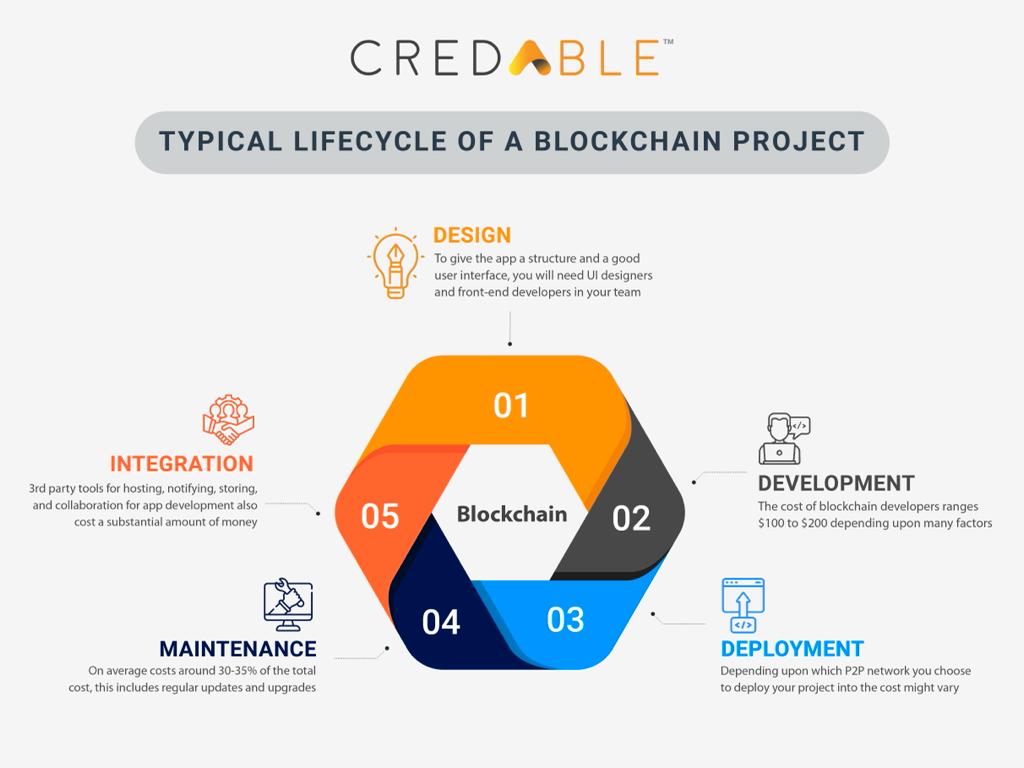
In terms of costs, there is no precise answer as to what the costs are for creating a Blockchain solution — this depends heavily on your blockchain requirements. Blockchain is a technology that depends on features, and therefore, the final price will vary depending on project requirements. Naturally, the price to create a blockchain project will primarily be based on developer costs.
Hiring a full-time blockchain app development team can cost you anywhere from $50,000 for beginners to $100,000 for a team with experts. The only major cost that you would have with Blockchain DApps development is hiring blockchain developers.
For a start, you may want to consider developing a MVP of your blockchain solution starting from about $5000, and moving up to the full-fledged solution that may cost over $100,000. Narrowing down the requirements (in terms of developers, project managers, marketing professionals, etc.) it will cost you between $15000 and $60000 to build your blockchain app. All of that requires an entire team of professional developers, marketers, consultants, managers, and administrators, which is why such projects typically cost $50k. Usually, expenses come from the outside databases, servers, application tests, etc. In short, complicated Blockchain development requires a bigger investment, and you need to spend about $120K more than usual.
There are several factors affecting cost which differ from industry to industry: the complexity of the blockchain, the number of stakeholders that would be interfacing with the blockchain at a given point of time, and compliance with the industry, among others.
By looking at this information it becomes clear that with a rigorous economic analysis and careful allocation of working capital, India can be a true pioneer in the usage of technology for governance.
